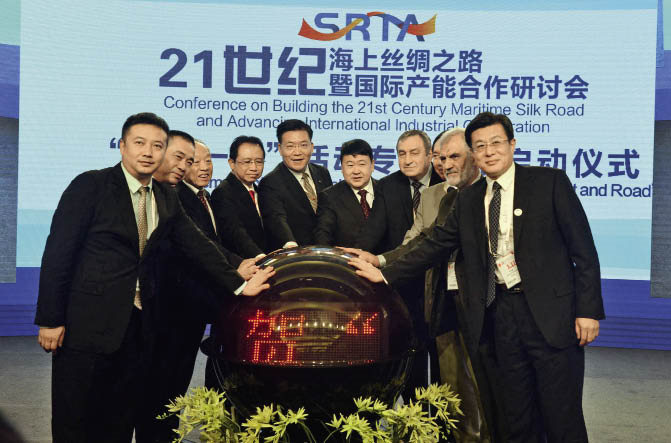China Plays Growing Role in Global Governance
China Today by Wang Yiwei, December 20, 2016 Adjust font size:
China is embracing its responsibilities in global governance as it moves towards a more constructive and reforming role.
Providing Public Goods in Materials
Since the start of the financial crisis, China has been acknowledged as a major engine powering global economic growth. Its contribution to the world economy remains at 30 percent, around twice that of the U.S.
President Xi Jinping announced at a summit marking the UN’s 60th anniversary held on September 26, 2015 that a fund will be set up with an initial injection of US $2 billion to support South-South cooperation and assist developing countries with the implementation of their post-2015 development agenda, thereby helping the international community achieve the goals set out in the UN’s 2030 Agenda for Sustainable Development.
China also plans to increase its investment in least developed countries (LDCs) to US $12 billion by 2030, and has written off the debt of outstanding intergovernmental interest-free loans due by the end of 2015 owed by the relevant LDCs, landlocked developing countries and small island developing countries.

The Conference on Building the 21st Century Maritime Silk Road and Advancing International Industrial Cooperation, held in Xiamen City of Fujian Province on September 7, 2016.
China has proposed the creation of a global energy network, using a massive electricity grid to share renewable energy sources around the world. At the International Seminar on the Belt and Road Initiative in Xi’an, on September 27, Wang Yimin, secretary general of the Global Energy Interconnection Development and Cooperation Organization (GEIDCO), said that the proposed global energy connection will be made using a smart grid, an ultra-high voltage transmission network and clean energy. This method will implement the proposal put forward by Xi Jinping at the aforementioned UN Summit that a Global Energy Internet (GEI) should be established to meet the global power demand with clean and green alternatives.
A GEI is an energy network covering the whole globe and its construction involves numerous components including power sources, power grids, equipment, and scientific research and information, so forming a long industrial chain. Creating a GEI will not only improve energy efficiency and guarantee a sufficient power supply, but also expand the development of new businesses and strategic emerging industries such as new energy, new materials, intelligent manufacturing, and electric vehicles. It will thus substantially boost national economic growth, structural adjustment and industrial upgrading.
In March 2016, the State Grid Corp. of China signed an MOU with the Korea Electric Power Corp., Japanese company SoftBank Corp., and Russian company OAO Rosseti, to establish a Northeast Asia grid cooperation scheme, manned by a team comprising workers from China, Mongolia, South Korea, and Japan. UN Under-Secretary-General for Economic and Social Affairs Wu Hongbo pointed out that building a GEI is in our common interest, as it will fuel the green energy revolution, promoting peaceful, sustainable world development.
Building a GEI consists of three stages: facilitating the interconnection of networks within countries; intracontinental networks; and finally transcontinental interconnection. The project is expected to be completed by the middle of this century. By then, renewable energy is projected to rise to more than 80 percent of the total global consumption. Carbon emissions will be capped at 11.5 billion tons (half the 1990 level of emissions), confining the global temperature increase to within 2 degrees centigrade. A new energy consumption pattern will emerge where most of the electricity used will be generated by clean energy sources. If this is achieved, the world will become a “global village” with an efficient power supply, blue sky and verdant lands.
